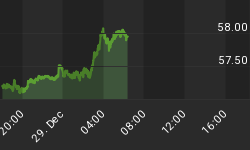Global stock markets, and the US markets in particular, have displayed a large degree of volatility since the middle of last year and daily fluctuations are now back at levels last seen in 2003. This is shown clearly by the following graph of the daily change in the value of the S&P 500 Index.

Source: StockCharts.com
In the nature of stock markets, some investors seem ready to turn tail at the first sign of bad news. On the other hand, there are those who are only interested in knowing whether the current bear phase has bottomed so that they can buy stocks again.
This begs the question: When is the right time to buy stocks? Unfortunately there is no straightforward answer, irrespective of the amount of analysis thrown at the issue. But let's step aside from trying to time the market by simply considering what the chances would be of losing/making money on the stock market over different holding periods.
I have asked the research team of my investment firm, Plexus Asset Management, to conduct an analysis of the returns of the S&P 500 Index for different holding periods over the past 51 years (i.e. from the inception of the "new-look" S&P 500 Index in 1957 through 2008). Both price movements and dividends were included in the return calculations.
The following graph and table summarize the research results:


The analysis of the one-month holding periods indicated that 36.3% of all the periods resulted in a negative return and that 63.7% of all the periods therefore recorded a positive return. The best one-month period (September 1982) showed a return of 12.1% and the worst month (October 1987) a return of -21.6%, while the average monthly return was 0.9%.
It therefore seems as if the likelihood of a profit over the one-month period is better than the likelihood of a loss, but in view of a probability of 36% investors will still have a tough time knowing how the situation will play itself out.
Unless you have the proverbial crystal ball, why take the risk of investing in the stock market? It is for the simple reason that the situation looks significantly different over longer periods – the longer the investment term, the less chance of ending up in the red.
By increasing the investment term to one year, the picture already starts improving. 76.9% of all the one-year periods showed a positive return, i.e. 23.1% of these periods registered negative returns. Furthermore, the best one-year period (August 1982 to July 1983) showed a return of 60.2% and the worst (November 1973 to October 1974) a return of -34.2%. The average return was 11.9%.
As can be expected, investors fared much better over the five-year holding periods. A loss was made in only 8.0% of the periods, while the average return amounted to 10.8% per annum. The best period (September 1982 to August 1987) showed a return of 29.7% per annum, whereas the worst period (April 1998 to March 2003) recorded a return of -3.8% per annum.
Stretching the holding period even longer, not a single one of the 493 rolling ten-year periods produced a negative return. The average return for staying invested for ten years was 11.1% per annum.
The research results are not offered as an alternative to sound fundamental and technical models (or perhaps an experienced "gut") with a track record of having accurately identified entry or exit levels over time. It merely serves the purpose of alerting investors to the stock market's return profile over different holding periods in order to (1) know what they are "up against", and (2) properly match their investment personalities with investment periods that are optimal for allowing them a good night's sleep en route to an improved lifestyle.
















